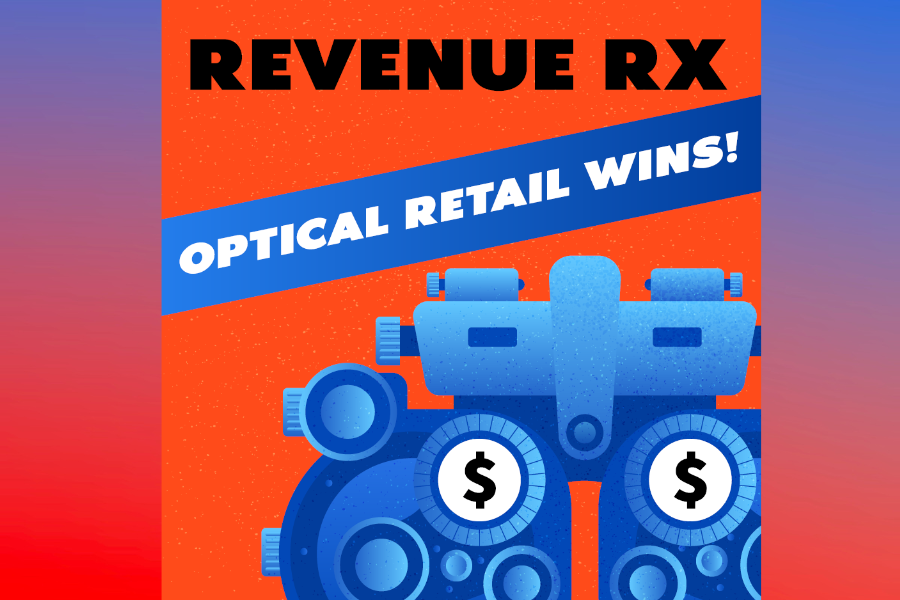
Trust is the foundation of every relationship—whether in business, friendships, or customer interactions. Without trust, everything becomes harder. Customers hesitate, employees disengage, and business growth stalls. But with trust? The possibilities are endless.
In this episode of Revenue RX: Optical Retail Wins, I explore why lack of trust is your biggest expense. It leads to wasted time, lost customers, and decreased revenue. On the flip side, building trust accelerates sales, boosts loyalty, and strengthens teams.

So, how do you cultivate trust with customers, employees, and business partners? It all starts with clarity, competence, consistency, and transparency.
The True Cost of Lost Trust
Think about it—if your customers don’t trust you, they’ll hesitate to buy. If your employees don’t trust you, their performance suffers. If your business lacks transparency, inefficiencies creep in, morale drops, and revenue declines.
Studies show that in high-trust work environments:
✔️ Employees experience less stress and burnout
✔️ Productivity is higher
✔️ Engagement and job satisfaction increase
✔️ Businesses see higher customer retention
Without trust, you’re constantly working harder for smaller returns. But when trust is present, business flows more smoothly—customers return, employees are motivated, and revenue grows organically.
How to Build Trust in Business
Trust isn’t built overnight, but small, consistent actions create lasting confidence.
✔️ Clarity = Trust
Lack of clarity leads to frustration and doubt. People need to know what to expect—whether it’s customers understanding pricing or employees understanding expectations. Transparent, direct communication builds confidence.
✔️ Competence = Trust
Customers need to believe in your expertise before making a purchase. Staff training is essential—when your team understands products and can educate customers, it builds trust effortlessly.
✔️ Consistency = Trust
Trust isn’t built on one good experience—it’s built on repeated positive interactions. Businesses that offer consistent service, pricing, and messaging earn customer loyalty.
✔️ Transparency = Trust
Employees and customers alike value honesty. Whether it’s explaining business decisions, admitting mistakes, or providing clear product information, being open fosters credibility.
Clarity: The Key to Empowerment & Trust
One of the most powerful ways to build trust is clarity.
Here’s an example: While working in Japan, I advised a restaurant owner named Komi. His business was struggling, and he wanted my help. The problem? His team didn’t understand their role in driving success.
The company’s structure was traditional—decisions were made at the top and filtered down. But the real revenue drivers weren’t the executives—they were the employees interacting with customers every day.
So, I flipped the structure. Instead of dictating from the top, I encouraged Komi to empower his staff by visiting each location personally. He clarified expectations, reinforced their importance, and built trust in their ability to succeed.
The result? A motivated, engaged workforce that took ownership of their roles—and revenues grew as a direct result.
The Power of Honesty & Transparency
Trust and transparency go hand in hand. Customers and employees need to know that you mean what you say.
When I owned my optical stores, my staff stayed with me for years—some for over a decade. Why? Because I was transparent. I involved them in business decisions, valued their feedback, and made them feel like partners, not just employees.
For customers, transparency is just as critical. Imagine walking into an optical store and being bombarded with sales tactics instead of straightforward advice. Would you trust that business? Probably not.
Honesty, fair pricing, and clear explanations build long-term relationships and repeat customers.
How to Build Trust in Sales
Trust is the shortcut to faster sales. Customers buy from people, not businesses—and they buy from people they trust.
Here’s how to create trust in the sales process:
✔️ Listen first, sell second – Customers don’t care how much you know until they know how much you care.
✔️ Educate, don’t manipulate – Provide value-based recommendations instead of just pushing products.
✔️ Be transparent about pricing – No hidden fees, no surprises.
✔️ Follow through on promises – If you say it, deliver it.
✔️ Be authentic and relatable – People buy from people they like and trust.
The strongest salespeople don’t “sell”—they help customers make informed decisions.
Final Thoughts: Is Lack of Trust Costing You?
Trust isn’t just a feel-good concept—it’s the foundation of every successful business. Without trust, sales slow, customers hesitate, and employees disengage.
But when trust is high:
✔️ Customers buy faster and return more often
✔️ Employees are more engaged and productive
✔️ Business flows more efficiently—and revenue grows
Ask yourself: What is lack of trust costing you?
If you’re ready to transform trust into your greatest asset, tune in to this episode of Revenue RX: Optical Retail Wins. And don’t miss the next episode, where we’ll explore how to build the ultimate high-performing team—because your employees are your greatest asset!

Joseph Mireault
Joseph Mireault, Optical Entrepreneur, Business Coach, and Published Author.
Joseph was the owner and president at Tru-Valu Optical and EyeWorx for 16 years. During his tenure, he consistently generated a sustainable $500K in annual gross revenue from the dispensary.
He now focuses on the Optical industry, and as a serial entrepreneur brings extensive experience from a variety of different ventures.
Joseph is also a Certified FocalPoint Business Coach and looks to work directly with ECPs in achieving their goals.
Through his current endeavour, the (Revenue RX, Optical Retail Wins podcast) he shares the challenges and solutions of running an Optical business.
His insights are shared with optical business owners aspiring for greater success in his new book, “An Entrepreneur’s Eye Care Odyssey: The Path to Optical Retail Success.”










